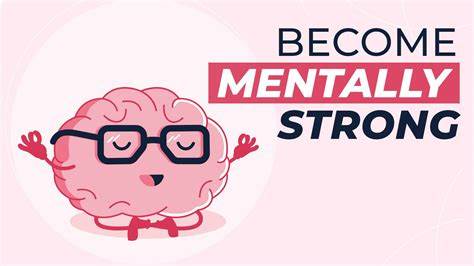In our fast-paced world, while physical fitness is often prioritized, mental strength and fitness are equally, if not more, crucial for navigating life’s challenges, maintaining well-being, and achieving our goals. Being mentally strong doesn’t mean you never feel stressed, sad, or overwhelmed; it means you possess the tools and resilience to manage these emotions, bounce back from adversity, and maintain a positive outlook.
This guide will provide a comprehensive, step-by-step approach to cultivate mental strength and fitness, empowering you to thrive in any circumstance.
What Does it Mean to Be Mentally Strong and Fit?
Mental strength and fitness refer to the capacity to:
- Manage Emotions: Effectively regulate feelings like stress, anxiety, anger, and sadness.
- Build Resilience: Bounce back from setbacks, failures, and difficult experiences.
- Maintain Focus: Concentrate on tasks and goals despite distractions.
- Adapt to Change: Navigate transitions and uncertainty with flexibility.
- Think Rationally: Avoid spiraling into negative thought patterns.
- Set Healthy Boundaries: Protect your time, energy, and emotional well-being.
- Seek Support: Recognize when you need help and be willing to ask for it.
It’s not about being emotionless or invulnerable, but about developing healthy coping mechanisms and thought patterns.
Step 1: Understand Your Mindset and Thought Patterns
The foundation of mental strength lies in understanding how you think.
- Identify Negative Self-Talk: Pay attention to the recurring negative thoughts you have about yourself, others, or situations. Are you overly critical, pessimistic, or prone to catastrophizing?
- Action: Keep a thought journal for a few days, noting down negative thoughts and the situations that trigger them.
- Challenge Cognitive Distortions: These are irrational ways of thinking that can lead to negative emotions. Examples include:
- All-or-nothing thinking: Seeing things in black and white.
- Overgeneralization: Drawing broad negative conclusions from a single event.
- Catastrophizing: Expecting the worst possible outcome.
- Personalization: Blaming yourself for everything.
- Action: When you catch a negative thought, ask yourself: “Is this thought truly factual? What’s another way to look at this? What would I tell a friend in this situation?”
- Practice Gratitude: Shifting focus to positive aspects of your life can rewire your brain.
- Action: Each day, list 3-5 things you are grateful for, no matter how small. This can be done verbally, in a journal, or mentally.
Step 2: Cultivate Emotional Regulation
Learning to manage your emotions effectively is a cornerstone of mental fitness.
- Acknowledge and Validate Emotions: Don’t suppress or judge your feelings. Allow yourself to feel them without letting them consume you.
- Action: When a strong emotion arises, identify it (“I feel angry,” “I feel anxious”). Breathe deeply and tell yourself, “It’s okay to feel this.”
- Practice Deep Breathing Techniques: This helps calm your nervous system.
- Action: Try 4-7-8 breathing: Inhale for 4 counts, hold for 7, exhale for 8. Repeat several times.
- Develop Healthy Coping Mechanisms: Instead of unhealthy habits (e.g., excessive scrolling, overeating), find constructive ways to deal with stress.
- Action: Identify activities that genuinely relax or uplift you: listening to music, reading, spending time in nature, talking to a supportive friend, light exercise. Create a “Coping Toolkit” list you can refer to.
Step 3: Build Resilience and Adaptability
Resilience isn’t avoiding hardship, but effectively recovering from it.
- Embrace Challenges as Growth Opportunities: View setbacks as chances to learn and develop, rather than insurmountable obstacles.
- Action: After a failure, reflect: “What did I learn from this? How can I apply this lesson next time? What strengths did I discover in myself?”
- Set Realistic Expectations: Perfectionism can lead to burnout. Understand that not everything will go perfectly.
- Action: Practice self-compassion. Treat yourself with the same kindness and understanding you would offer a good friend facing a challenge.
- Focus on What You Can Control: Dwell on what’s within your power to change, rather than what’s beyond it.
- Action: For any stressful situation, draw a mental line: “What’s on my side (control)? What’s on the other side (no control)?” Direct your energy to the former.
- Develop Problem-Solving Skills: Approach problems systematically rather than being overwhelmed.
- Action: Break down large problems into smaller, manageable steps. Brainstorm solutions, evaluate pros and cons, and then take action.
Step 4: Prioritize Self-Care and Healthy Habits
Your physical health significantly impacts your mental health.
- Ensure Adequate Sleep: Lack of sleep severely impairs cognitive function and emotional regulation.
- Action: Aim for 7-9 hours of quality sleep per night. Establish a consistent sleep schedule and a relaxing bedtime routine.
- Maintain a Balanced Diet: Nutritional deficiencies can affect mood and energy levels.
- Action: Focus on whole, unprocessed foods. Limit sugar, caffeine, and highly processed items.
- Engage in Regular Physical Activity: Exercise is a powerful mood booster and stress reducer.
- Action: Find an activity you enjoy and aim for at least 30 minutes of moderate exercise most days of the week.
- Practice Mindfulness and Meditation: These techniques train your mind to stay present and reduce rumination.
- Action: Start with 5-10 minutes of guided meditation daily using apps like Calm or Headspace, or simply focus on your breath.
- Limit Exposure to Negativity: Be mindful of news, social media, and people that drain your energy.
- Action: Unfollow toxic accounts, take news breaks, and set boundaries with consistently negative individuals.
Step 5: Build a Strong Support System and Set Boundaries
Human connection and healthy boundaries are vital for mental well-being.
- Nurture Relationships: Spend time with people who uplift and support you.
- Action: Actively reach out to friends and family. Schedule regular social interactions that bring you joy.
- Learn to Say No: Protect your time and energy from commitments that don’t serve you.
- Action: Practice politely declining requests that overextend you. Understand that “no” is a complete sentence.
- Seek Professional Support When Needed: Mental health professionals can provide invaluable tools and guidance.
- Action: If you feel persistently overwhelmed, sad, anxious, or unable to cope, don’t hesitate to reach out to a therapist, counselor, or psychiatrist. There is no shame in seeking help.
- Give Back: Helping others can provide a sense of purpose and boost your own well-being.
- Action: Volunteer, help a friend, or offer support in your community.
Step 6: Set Meaningful Goals and Celebrate Progress
Having a sense of purpose and acknowledging your achievements fuels mental strength.
- Set SMART Goals: Make your goals Specific, Measurable, Achievable, Relevant, and Time-bound.
- Action: Break down big goals into smaller, manageable steps. Focus on the process, not just the outcome.
- Practice Self-Reflection: Regularly review your progress, learn from mistakes, and recognize your strengths.
- Action: Set aside time each week to reflect on what went well, what was challenging, and what you learned.
- Celebrate Small Victories: Acknowledge your efforts and achievements, no matter how minor.
- Action: Give yourself credit for overcoming challenges and reaching milestones. Positive reinforcement boosts motivation and self-esteem.
Becoming mentally strong and fit is a continuous journey, not a destination. It involves consistent effort, self-awareness, and a commitment to nurturing your mind just as you would your body. By integrating these strategies into your daily life, you can build a robust mental foundation that equips you to handle life’s inevitable ups and downs with grace, resilience, and a profound sense of inner peace.





